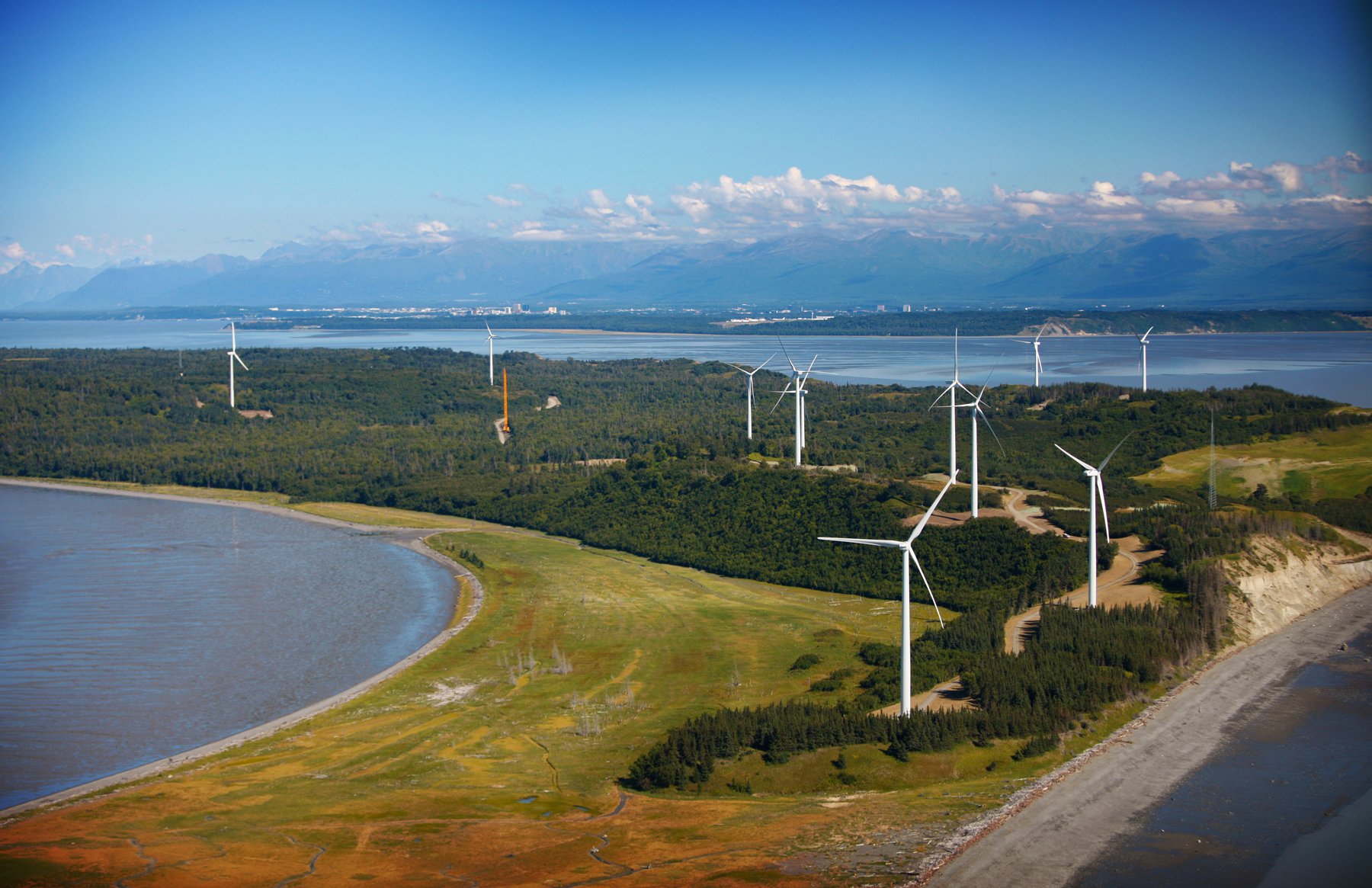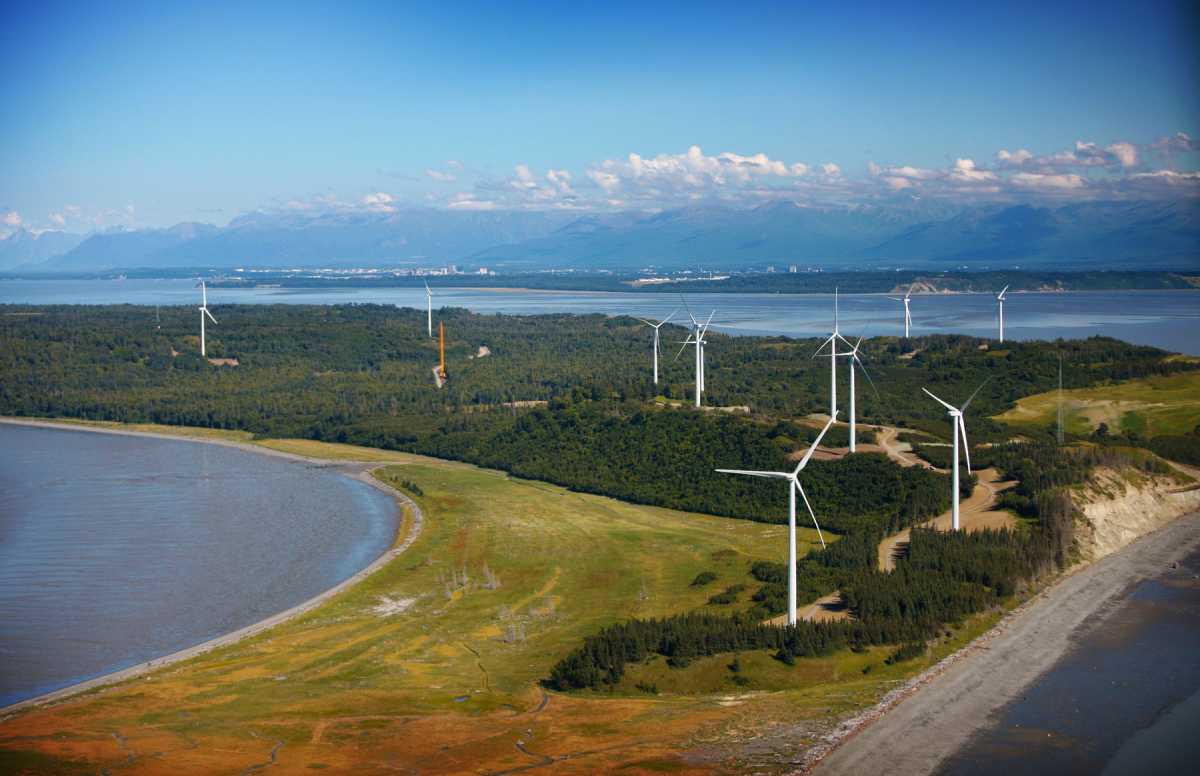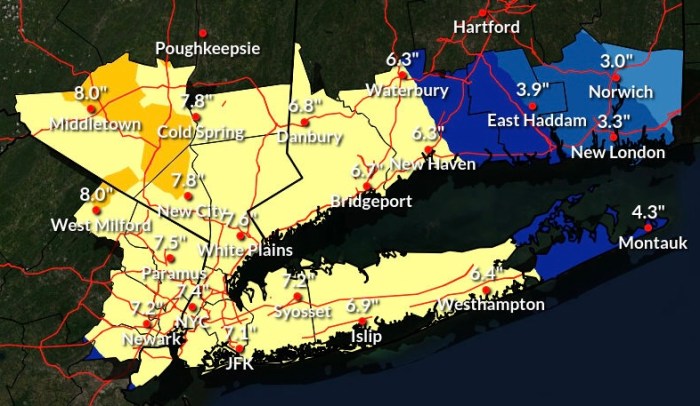
Photo of the Fire Island Wind project in Fire Island, Alaska courtesy of Fire Island Wind LLC a subsidiary of Cook Inlet Region, Inc.
A few miles off the coast of the mainland there is an island inhabited by numerous species of wildlife, an occasional team of visiting technicians, and 11 wind turbines – welcome to Fire Island of Anchorage, Alaska. Wind turbines have been business as usual for sometime here now and plans are currently being evaluated to install more of them in the near future.
Most of Fire Island, Alaska is owned by an Indigenous Alaskan corporation called Cook Inlet Region, Inc (CIRI). CIRI operates a commercial wind energy project on the island called Fire Island Wind that utilizes 11 wind turbines in order to supply 50,000 MWh of power to Chugach Electric Association (Alaska’s largest electric utility) annually. The Fire Island Wind website states that the project currently has the capacity to power approximately 7,000 homes and eliminates up to 500 million cubic feet of natural gas consumption annually. Fire Island Wind was also the first utility-scale renewable power project in southcentral Alaska according to Daniel Jensen, Director of Business Development and Asset Management at CIRI.
Fire Island, Alaska was identified as a good location for a future wind project during a survey conducted during the late 1990s. In 2000, the Chugach Electric Association approached CIRI about developing a wind farm on Fire Island and the two institutions (and their partners) spent the early 2000s measuring the island’s wind and launching permitting activities. In 2008, the Federal Aviation Administration (FAA) approved only a scaled-down version of the project out of fears that it would create interference for a VOR (VHF Omni-directional Radio Range) aircraft navigational aid located on the island. CIRI responded by constructing a new VOR elsewhere at its own expense to gain full approval. All major environmental and other regulatory approvals were in place by 2011 allowing construction to go forward. Fire Island Wind began commercial operation on September 24, 2012, Fire Island Wind began and celebrated its 10th anniversary last year. All of this history was explained by CIRI. Today talk of expanding the project is ongoing.
Jensen explained that the further diversification of south central Alaska’s power generation resources through renewables is not only important for decarbonization and fighting climate change but also for preventing regional natural gas shortages in the coming years. He said of CIRI’s expansion plans on Fire Island: “We are currently evaluating expansion opportunities on the island. We don’t have a specific timeline but we are evaluating the expansion opportunities there in addition to evaluating projects on our other lands as well.” Julie Hasquet, a spokeswoman with Chugach Electric, told the Anchorage Daily News in 2022 that “Chugach would be interested in accepting more Fire Island wind energy if it doesn’t increase costs to our members.” If expansion plans are enacted 22 more wind turbines could be added to the island tripling electric production and creating enough clean electricity to power 14,000 more homes than it can today according to Jensen.
Fire Island, Alaska is also home to more than just wind turbines. It also hosts interesting wildlife and history. While the island currently hosts no permanent human population Jensen says the Fire Island Wind operations team regularly sees bears, moose, and porcupines on the heavily vegetated 4000-acre island. Eagle nests also sometimes have to be taken down by the operations team when they are built too close to the turbines this is done to force the birds to relocate to safer areas. The origins of the name of Fire Island, Alaska, like the name of Fire Island, New York are disputed. However, according to the Fire Island Wind website, the island is called “Fire Island” because sailors sent by Captain James Cook lit a fire on the island which acted as a beacon for the explorer, inspiring the name Fire Island. The Fire Island Wind website also states that over the centuries the island has hosted an indigenous Alaskan village abandoned due to an epidemic, Dena’ina Alaskan Native fishing camps, a WW2-era observation point to guard against Japanese submarines, and an air defense radar center site for NORAD (North American Aerospace Defense Command). Today of course the island hosts an 11-turbine wind energy generation project.
Fire Island, Alaska and Fire Island, New York are two very different islands despite sharing a name and a status as relatively pristine waterfront wildlife habitats. The two islands border different bodies of water, sit in different states, have different climates, host different ecosystems, were formed by different geological phenomena, feature drastically different population densities, and regulate land use very differently. However, are the hopes, concerns and destinies for both of these islands within the United States really so different? There is both beauty and affinity within this etymological coincidence.



























